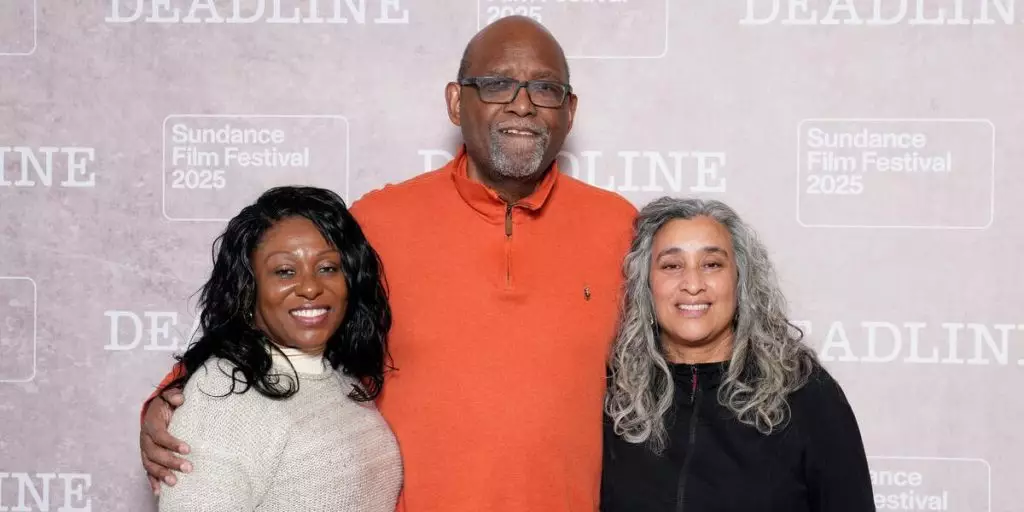In the fabric of American society, neighborhoods are often perceived as sanctuaries—a place where individuals can coexist peacefully. However, the documentary “The Perfect Neighbor,” directed by Geeta Gandbhir, dissects this ideal, revealing how a seemingly trivial dispute can spiral into catastrophic violence. This article aims to analyze the documentary while examining the broader implications of Florida’s “stand your ground” laws, a focal point in the tragic series of events that unfolded in one particularly tight-knit community.
At the heart of “The Perfect Neighbor” is the confrontation between a woman known as a “Karen”—Susan Lorincz—and the victim, Ajike Owens, an everyday mother of four. Gandbhir’s documentary exposes how Lorincz’s persistent complaints about children’s play turned from mundane neighborhood disputes into heated altercations, culminating in a life taken too soon. Instead of showcasing a community engaged in a harmless disagreement, the documentary highlights a descent into paranoia and violence, fueled by Lorincz’s increasingly aggressive behavior.
Through police bodycam footage, Gandbhir presents a raw narrative that strips away any romanticized notion of neighborhood life. The stark realities portrayed in the footage provide viewers with unsettling glimpses into the events leading up to Owens’ tragic death. This technique allows the viewer to form their own opinions about the complex factors at play, rather than presenting a sugarcoated version of events.
In traditional settings, bodycam footage is often characterized as a mechanism of accountability for law enforcement. However, Gandbhir flips this expectation on its head, utilizing the footage as a lens to scrutinize not just the actions of police but the broader societal constructs that govern community interactions. The documentary intricately weaves the narrative of Lorincz’s harassment with the eventual fallout, compelling viewers to question the efficacy and implications of Florida’s legal protections for individuals who invoke “stand your ground” in self-defense.
This recontextualization makes clear the deeply ingrained biases that exist within the law enforcement system. Pam Dias, the mother of the victim, poignantly states that the tragedy could have easily beenfalling any family, accentuating the universal nature of the fears surrounding neighborhood safety. The contrast drawn between how the police handled Lorincz versus how they would have treated a Black woman lays bare systemic inequalities that are often glossed over in discussions of legal justice.
As the film delves deeper into the local dynamics, it uncovers layers of racism and community fracture that can go unnoticed in everyday life. The incident is not merely about a conflict between neighbors; it reflects the complicated psychological framework in which people, particularly in suburban settings, interact. Owning a home—often a reflection of the American Dream—can morph into an expression of territoriality and protectiveness, where any perceived threat is met with disproportionate fear.
The interviews included in the documentary uncover the jarring reality that many in the community were either complicit in the aggression or unwilling to speak out against it. The fear of retaliation often silences those who may oppose discriminatory actions, creating an environment in which violence is tolerated, if not encouraged.
As the documentary unfolds, it remains steadfast in its call for justice, urging viewers to recognize the urgency of the situation. The neglect of systemic failings and the need for reform in law enforcement practices become glaringly apparent. The reverberations of Ajike Owens’ death extend beyond personal tragedy; they call for societal introspection.
As Gandbhir casts a spotlight on the community’s collective grief, she simultaneously creates a powerful narrative about the importance of addressing racial and legal disparities. This documentary isn’t just a reflection on a single, horrific event; it is a clarion call for a reevaluation of how neighborhood disputes are managed and the societal structures that support potentially deadly responses to minor conflicts.
Ultimately, “The Perfect Neighbor” pushes for a reckoning with both personal and systemic failures within communities. Through effective storytelling and the harrowing portrayal of real events, Gandbhir opens a crucial dialogue about the intersection of neighborhood safety, race, and the consequences of policies like Florida’s “stand your ground” laws. As viewers are left to ponder the future of their own communities, the film serves as a haunting reminder that the fragility of neighborly relationships can set the stage for violence unless addressed with empathy and justice.


Leave a Reply